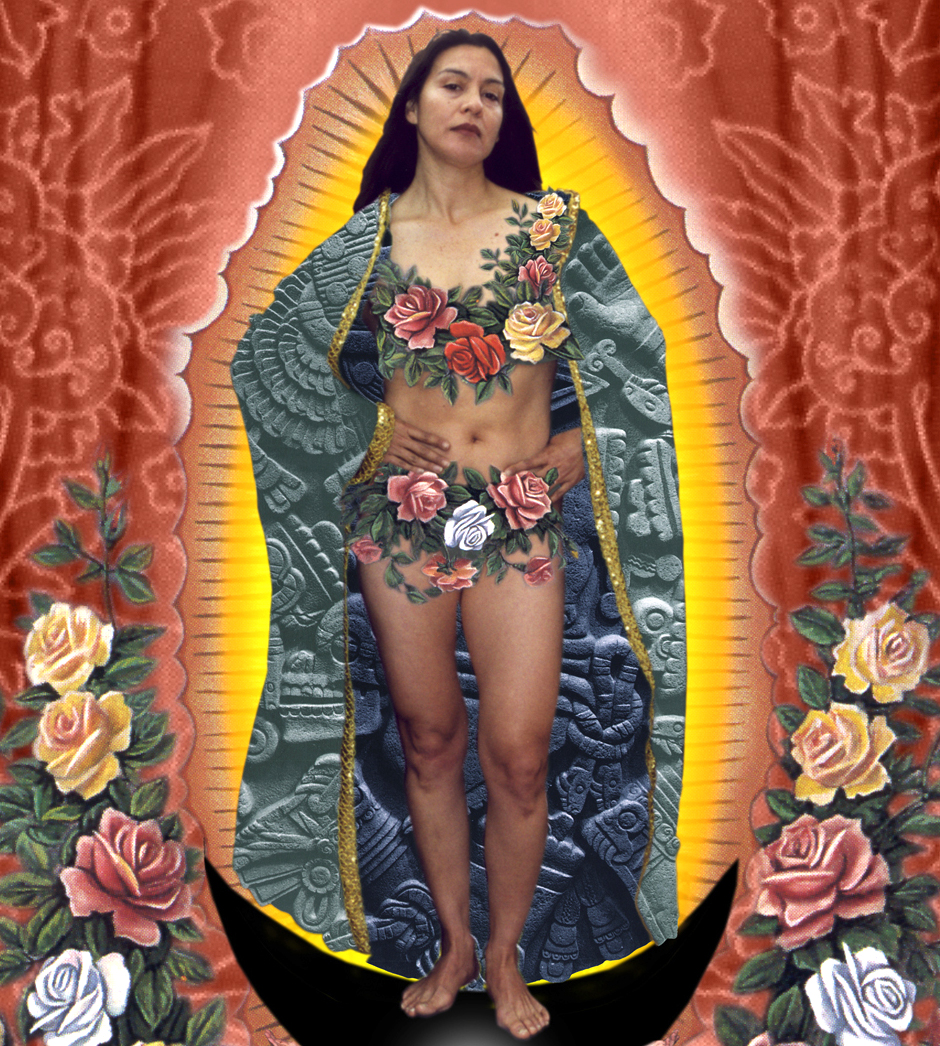Alma López’s art piece “Our Lady” was an instant scandal in New Mexico in 2001. As soon as López’s reinterpretation of the Virgen de Guadalupe was revealed wearing what was later described as a bikini of roses, López began to receive death threats from angry Catholic activists for her revitalization of a traditional religious image.
Much of López’s work is centered on the theme of fighting back. As an activist and artist, López works to speak out for women, education, and people of different ethnicities and sexualities. She is also a UCLA Chicana and Chicano studies professor. Recently López was featured in the Kerckhoff Hall Art Gallery with her exhibition “Revolutionary Love,” which celebrated UCLA National Coming Out Week.
While growing up in Los Angeles, López said she was always surrounded by artwork ““ tattoos, murals, decorated lowrider cars and even decorations on treats from her local bakery. But it was not until her first year of college that López realized her passion.
“My mother always supported me, and when I told her I wanted to study art and art history, she kind of gave me a funny look … She told me, “˜Alma, you need to take care of yourself. You also need to be happy, but take care of yourself,'” López said. “I told her art is what I want to do.”
Inspired by artists like Frida Kahlo, Artemisia Gentileschi and Graciela Iturbide, López said speaking out is a large theme of her art. Her works are vibrant and colorful, and have a Catholic and Chicano influence. She uses symbols like the Aztec moon goddess, Coyolxauhqui, to represent peace. Oftentimes, she will take classic Christian images and reconstruct them so they are more revolutionary, like in “Our Lady.”
López’s career took off in the 1990s after the L.A. riots, a violent racial uprising. In response, López painted murals throughout Los Angeles. One of her most recognizable murals is “Education is a Basic Human Right,” which combines the victories of the court cases Mendez v. Westminster and Brown v. Board of Education. Both court cases involved integrating Latino or black students into schools.
The mural depicts Latino and black people holding an American flag, their fists raised while demanding education and equal rights. In the background, people from a past era are painted in black and white, and peacefully stand and watch.
“I saw how people of different colors were being pitted against one another, when really they should have been uniting together. (I) realized that they had more in common than they did differences. … In “˜Education is a Basic Human Right,’ (I) addressed those similarities,” said López.
López’s most recent project was the “Revolutionary Love” art gallery. Dafne Luna, a third-year gender studies student and one of López’s students, helped organize this project.
“We were working on an event for National Coming Out week, and we knew there was a queer Chicana professor on campus, so we asked for Professor López’s help. … We used her for “˜Revolutionary Love’ because her work is bright, loud, beautiful work that you can’t help but notice,” Luna said.
There were many different pieces of artwork featured in “Revolutionary Love.” Among them were butterflies, flowers, saints and self-portraits of López.
The piece of art in the gallery that received the most inquiry from students was one of a mermaid with two tails surrounded by flames. López said students were interested in figuring out why the mermaid had more than one tail.
“I wanted students to be curious. I wanted them to stop and wonder why the mermaid had two tails. … The two tails are supposed to represent the many identities a person has,” López said.
Besides her work as an activist, López also teaches the UCLA class “Queer Arts in Los Angeles.”
“We have a lot of discussions with her and about her work. We are learning a lot about art and activism, and how the arts are utilized to show issues,” Luna said. “The class highlights the intersexuality of being queer, and then the arts and Los Angeles.
Charlene Villaseñor-Black, López’s colleague and a UCLA art history professor who has studied López’s work, said López creates a political use of religious forms. López reclaims them for Latina women, and repurposes those religious images.
“I’m interested in her work for two reasons; one is because of that activist edge her work has, and the other is that what she is doing is really innovative cutting-edge work in Chicano contemporary art,” Black said.
Black also said that López is an excellent storyteller, and that her use of short, simple anecdotes about her life really helps her students connect with her.
For López, inspiration doesn’t just come from activism. When she works on a piece, she said she strives to make the viewer really think hard about it.
“I especially aim my artwork at students. If I inspire curiosity in them, and make them ask questions, not just about the artwork, but also about society and themselves, then I have succeeded,” López said.
